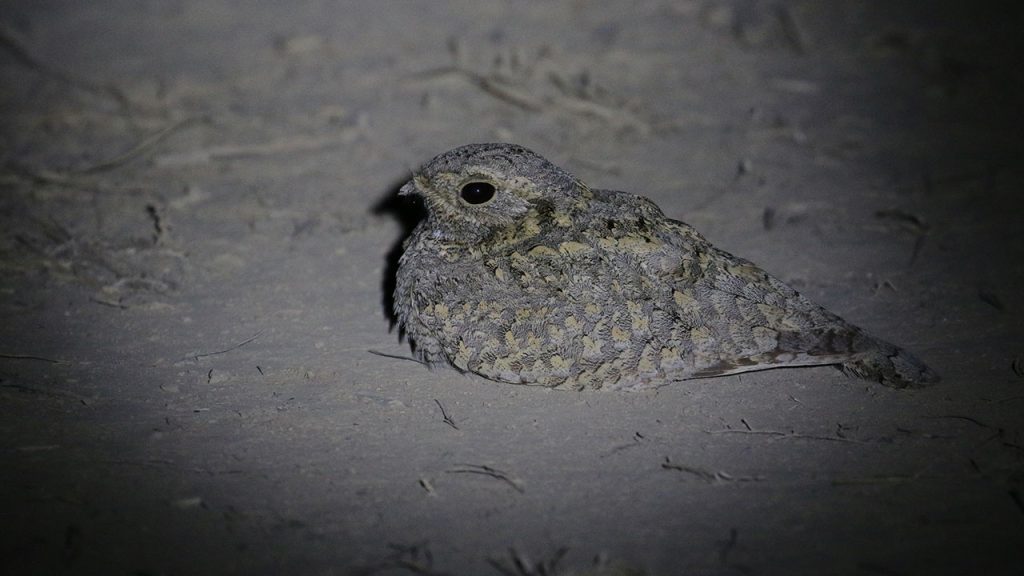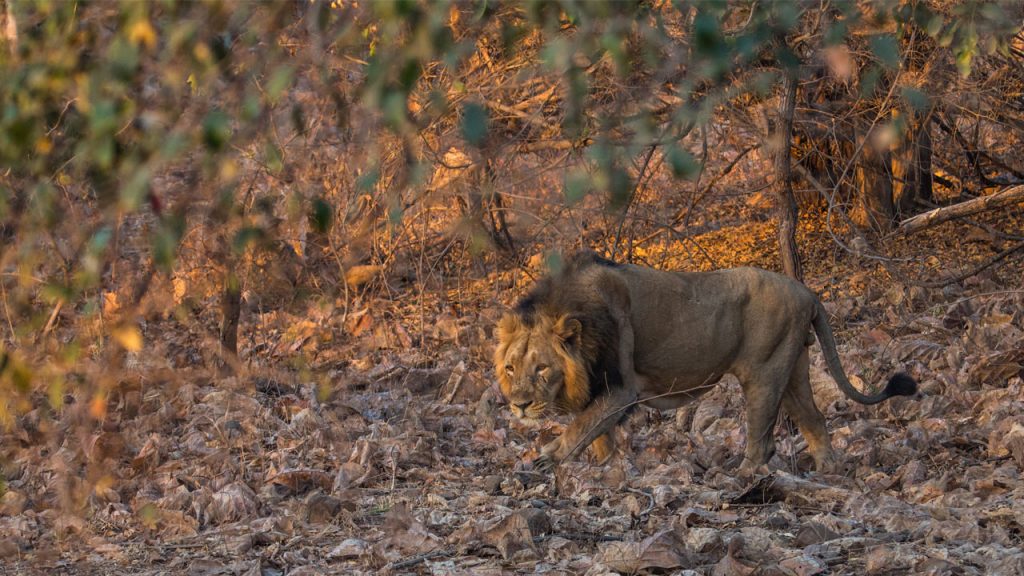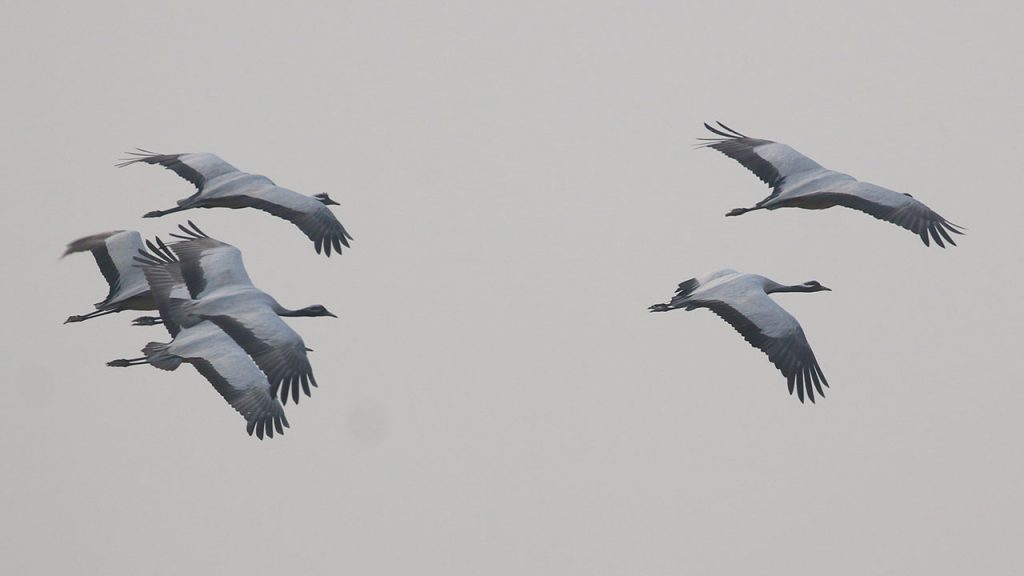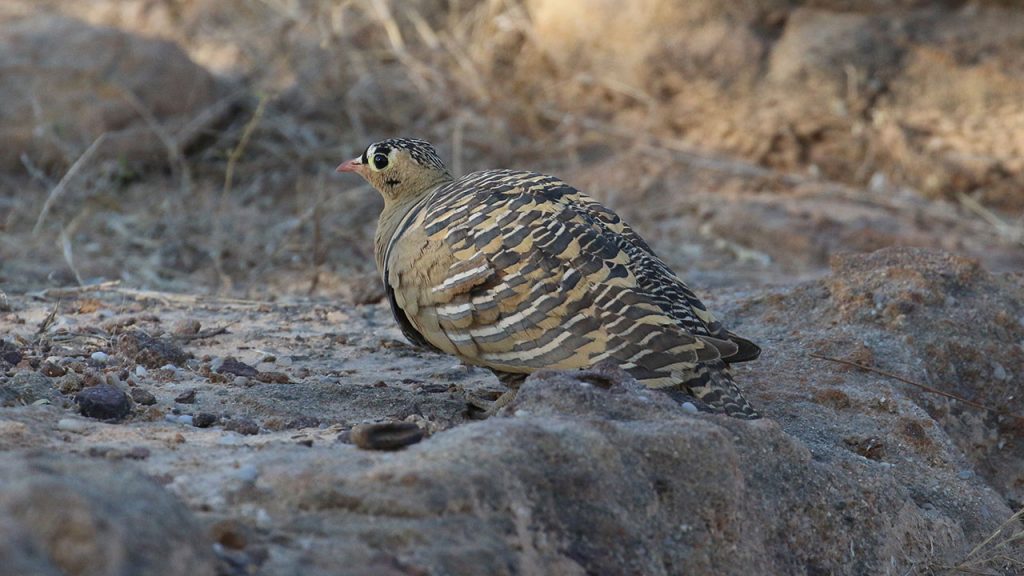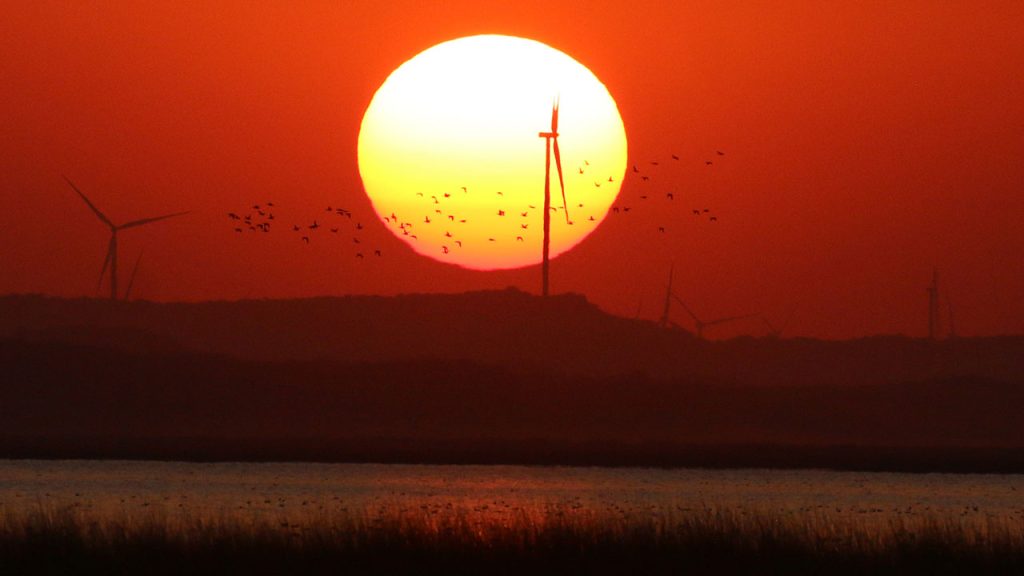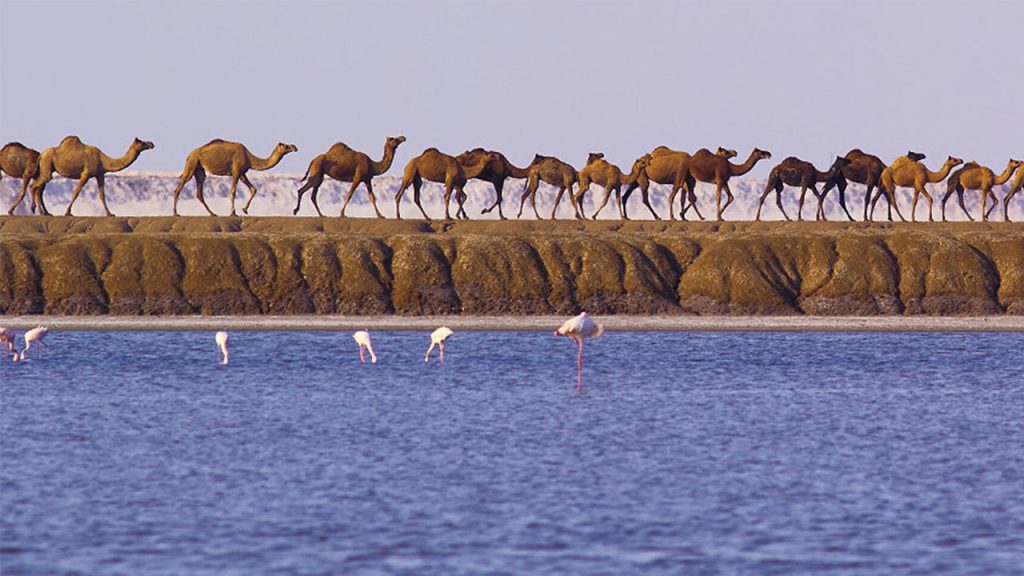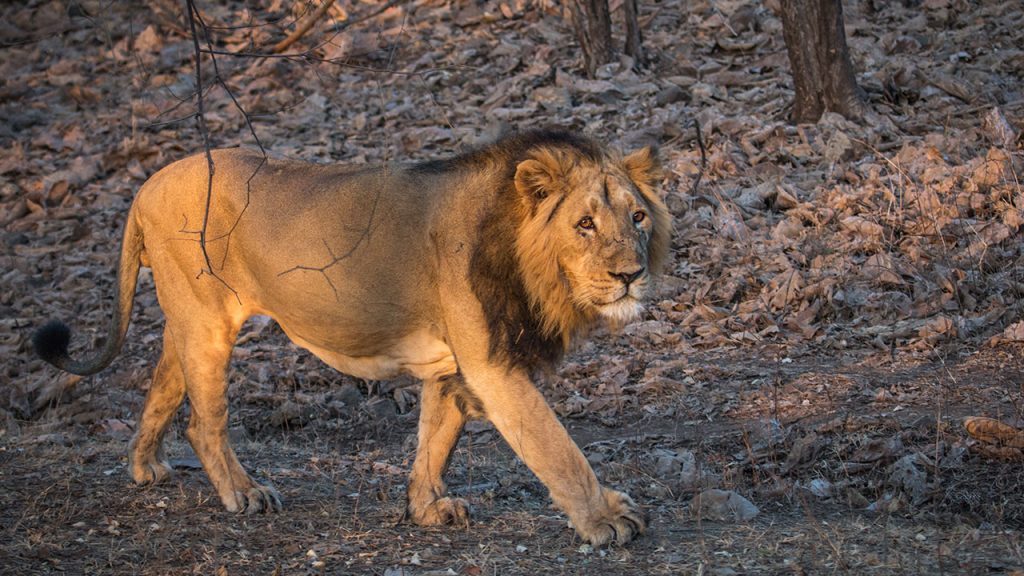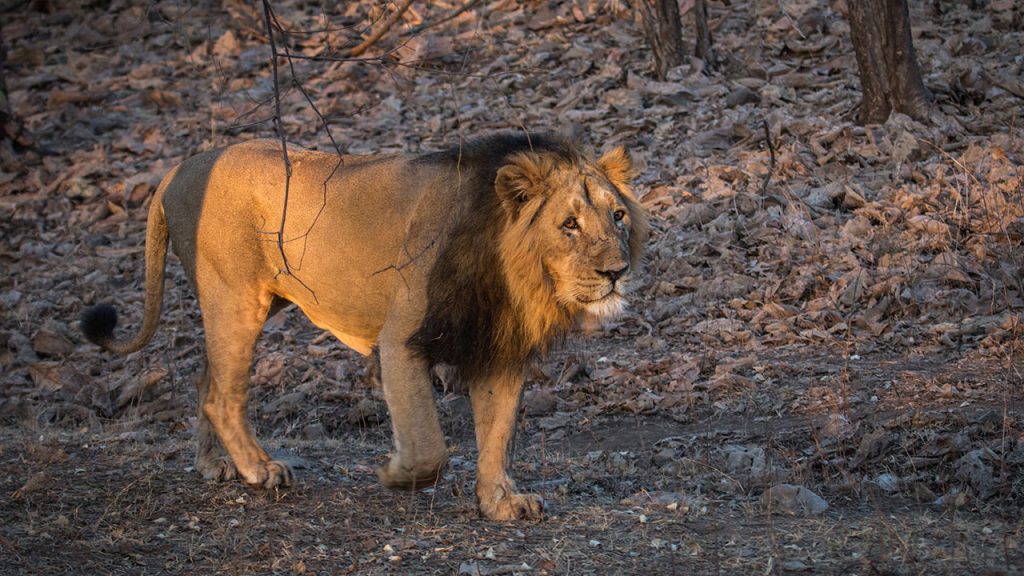
Gujarat is one of India’s prime wildlife regions, and one where the viewing is especially rewarding as much of the habitat is open grassland or desert, so animals and birds tend to be easier to spot than they are in more deeply forested areas. However, this does not imply that anything is guaranteed, and the challenge of finding some of India’s rarest creatures is one that we will rise to on this fascinating journey.
If one takes a close look at the emblem of India, one sees that it does not have the tiger, but instead features lions. Few people realise that lions once ruled the vast deciduous and scrub forests that then covered Gujarat. These lions are different from their cousins found in Africa. They once roamed through Gujarat and parts of Punjab now in Pakistan, and some experts say they could even be found in Afghanistan. However, their population in the last 100 years has been decimated, leaving the Gir forests of India as the last bastion for this magnificent cat.
This tour has been planned to showcase some unique wildlife of this vast and diverse landscape. Other interesting species that we shall be focusing on during this adventure include the Indian Grey Wolf, Striped Hyena, the endemic Bengal Fox, Desert Cat, Blackbuck antelope and the Asiatic Wild Ass. The savanna-like grasslands are also home to the largest roost of Harriers in the world – comprising largely Pallid, Montagu’s and Marsh Harriers. Scrublands around the saltpans of Kutch are home to Flamingos, Pelicans, Cranes, Red-headed Falcon, Short-eared Owl, Indian Courser, Sociable Lapwing, Pratincoles and MacQueen’s Bustard, among other avian delights.
Itinerary: Delhi – Great Rann of Kutch – Little Rann of Kutch – Velavadar – Gir National Park – Delhi
Number of nights – 14 nights and 15 days
Fixed departure: 7th January 2024 to 21st of January 2024
Tailor-made itinerary: We will be happy to tailormake this itinerary as per your best suited time, number of days you have or species that you have in mind. Do drop us an email.
Detailed Itinerary
Day 01:- Arrive in Delhi
Our representative will meet you at the airport and will accompany you to your hotel close by to ensure a speedy check-in. The remainder of the day is at leisure after a long-haul flight. Depending on your flight timings and your inclination to explore, we can organize some city sightseeing or birding during the day. James Champion, your tour leader, will meet you at your hotel this evening over drinks and dinner so that everyone can get to know each other and run through the tour programme.
Overnight in Delhi. (D)
Day 02:- Delhi – Ahmedabad – CEDO
Much of today will be spent reaching the furthermost part of western India – the Great Rann of Kutch. Our base will be the Centre for Desert and Ocean (CEDO), an ethically-based resort that promotes wildlife protection in collaboration with local communities.
The day will start with a flight to Ahmedabad, where we will be met by our office representative who will introduce you to your drivers & their vehicles which will be with you throughout this trip. We will then embark on our long journey (around 8 hours) to the Great Rann of Kutch.
As we drive through this arid region, we will see the landscape change. We will stop enroute for lunch and restroom breaks and of course to stretch our legs.
Overnight at CEDO, in the Great Rann of Kutch (B, L,D).
Day 03 and Day 04:- Exploration of the Great Rann of Kutch
We will venture out to some incredible habitats today, including the dry semi-desert Banni grasslands, where we will search for local specialties including Stolizcka’s Bushchat, several species of Wheatear, Sykes’s Nightjar and thousands of Common Cranes which flight in to roost on the beautiful seasonal lake of Chhari Dhand. We will make special trips to different types of forest to search for two key species of this area, the Grey Hypocolius, which winters in toothbrush trees, and the enigmatic White-naped Tit, which frequents dry thorn forest, an endangered habitat type in Western India.
Day 3 will be spent exploring the Banni region, India’s largest grassland area. This is one of the Important Bird Areas, with a great concentration of Aquila and other eagles. The water bodies here are known for their large flocks of waterfowl.
Day 4 will involve a day trip to the Great Indian Bustard Sanctuary near Naliya. These grasslands are the habitat of the endangered Great Indian Bustard, White-naped Tit, Stolickza’s Bushchat, and a variety of other birds. Chinkaras (Indian gazelles) are likely to be seen and there are chances of seeing Indian Wolf.
Overnight at Great Rann of Kutch (B, L,D).
Day 05:- Great Rann of Kutch to Little Rann of Kutch
Our time in this remote corner of India, tucked away close to the Pakistan border, will come to an end all too quickly, but luckily another highlight awaits us: the Little Rann of Kutch. Today we make the long journey to this outstanding wildlife habitat (6-7hrs).
The Little Rann is another dried-up seabed, offering the extraordinary possibility of driving on a completely flat expanse of dried out mud with no features visible in any direction. Our base here will be the Rann Riders resort, close to Kaafila.
Overnight at Little Rann of Kutch (B, L, D).
Day 06 & Day 07: Little Rann of Kutch
Our lodge itself can offer roosting Pallid Scops Owl within the compound, and from here we will head out to the seasonally flooded Nawa Talab lake, with its myriad waterfowl and attendant raptors. Here Demoiselle and Common Cranes gather in large flocks during the winter months. Greater and Lesser Flamingoes are seen in large numbers, as are Great White and Dalmatian Pelicans. Painted, Openbill, Woolly-necked, White, Black and Black-necked Storks may be seen, along with Black, Glossy and Black-headed Ibis. Northern Pintail, Common Teal, Spot-billed Duck, Mallard, Gadwall, Wigeon, Garganey, Shoveler, Cotton Pygmy Goose, Pochard, Tufted Duck, Lesser Whistling Duck, Brahminy and Comb Ducks are among the many visitors to the lake. Waders include Pratincoles, Lapwings (possibly including the critically endangered Sociable), Sandpipers, Ruff and other birds in good numbers. We will also venture out onto the flat expanse of dried out mud to search for the best-known species of the area, the Asiatic Wild Ass, and special birds including the Greater Hoopoe Lark, MacQueen’s Bustard and possibly Short-eared Owl.
Overnight at Little Rann of Kutch (B, L, D).
Day 08:- Little Rann of Kutch – Velavadar
Our journey continues southwards this morning to Velavadar (4hrs). After a hearty breakfast we check-out and make our way to Velavadar. We should arrive at our lodge by lunchtime.
The Blackbuck Sanctuary at Velavadar is a hidden gem, one of the last stands of grassland remaining in the massive alluvial plain running along the Gulf of Khambatt, called Bhal. The Bhal is a tapestry of cotton, wheat and other agricultural fields, saline flats, grasslands, pastures, freshwater wetlands, and coastal marshes. Nearly forty species of grasses have been identified from Bhal.
The national park is a beautiful 35sq.km tract of largely treeless savannah grasslands and bushes that makes a stunning and enchanting sight. It is wonderful to watch the grasslands changing colour at different times of the day, with the golden grasses swaying in gentle breezes. The beauty of the grassland is enhanced by its abundance of wildlife, from butterflies and dragonflies to India’s largest antelope, the Nilgai. Some of the largest herds of Blackbuck antelope can be found here.
This afternoon is at leisure. Should you feel up to exploring, this evening we have the opportunity to venture out on a nature walk with the local naturalist in and around the vast lodge premises.
Overnight at Velavadar (B, L,D).
Day 09 & Day 10:- Velavadar
These two days are dedicated to exploring the grasslands of Velavadar. The key predator here is the Indian wolf, an endangered species. Indian wolves generally hunt in pairs or small packs, with one of them distracting the antelopes while the others take one from the group by surprise.
In open country these animal may sometimes be seen giving chase to their prey. Velavadar is also one of the most likely places to view a Striped Hyena, a species that is rarely seen elsewhere because of its nocturnal habits.
Besides the wolves, Blackbucks, and Hyenas, there is a lot more to see here: Jungle Cats, foxes, and Indian Eagle Owl, along with numerous harriers. This park is believed to hold the largest harrier roost in the world, with large numbers of Pallid, Montagu’s and Marsh being the main species.
Two safaris have been planned on each of these two days.
Overnight at Velavadar (B, L,D).
Day 11:- Velavadar – Gir National Park
After breakfast, we check out and will transfer by road to the Gir National Park – the last bastion of the Asiatic Lion. The journey should take about 4hrs.
In the evening, accompanied by a lodge naturalist, we will enjoy a nature walk through the bush outside the park, seeking out some of the wonderful bird diversity that can be found in this area. We have a good record of lion sightings in the area and many of our guests have seen an entire pride of lions near the lodge premises (while accompanied by experienced rangers!).
Overnight at Gir National Park (B, L, D).
Day 12 and Day 13:- Gir National Park
These two days are dedicated to exploring the Gir National Park. There are two safaris organized on each of the two days – one in the morning (6am – 9.30am) and the other in the afternoon (2.30pm – 5.30pm).
Gir Park was set up in 1965, and a 259-sq-km core area was declared a national park in 1975. Since the late 1960s, lion numbers have increased from under 200 to over 650 (not all these lions live within the park). The sanctuary’s 37 other mammal species, most of which have also increased in numbers, include dainty Chital (Spotted Deer), Sambar, Nilgai, Chausingha (Four-horned Antelope), Chinkara (gazelles), and rarely seen Leopards. The park is a great destination for birders, too, with more than 300 species recorded.
Overnight at Gir National Park (B, L, D).
Day 14:- Gir National Park – Rajkot – Delhi
Today brings the tour to an end. After an early breakfast, we check out and transfer to Rajkot airport (3.5hrs), from where we catch our flight to Delhi. Arrive in Delhi and transfer to hotel. If time allows, some city sightseeing or shopping for souvenirs may be possible.,
Overnight at Delhi (B, L, D)
Day 15:- Departure
After breakfast transfer to IGI airport and flight.
Please note: this and all the tours advertised on this website are organised and run by Rural Traveller. All participants must purchase adequate travel insurance to cover cancellation, medical treatment and possible repatriation.

